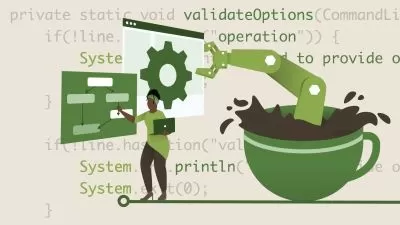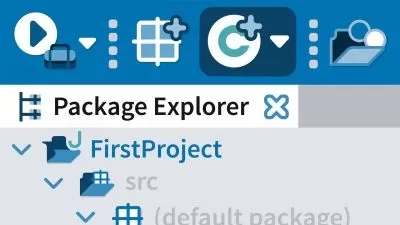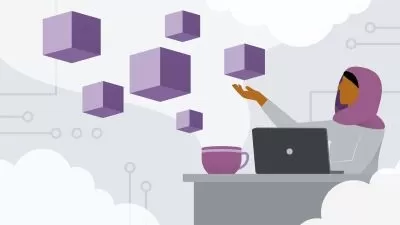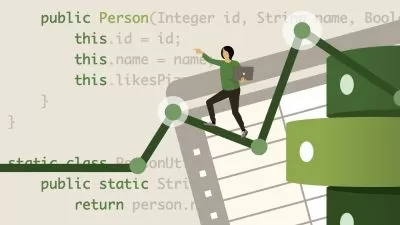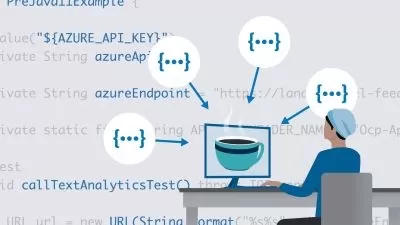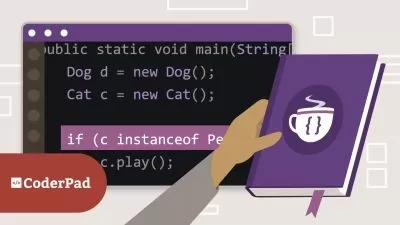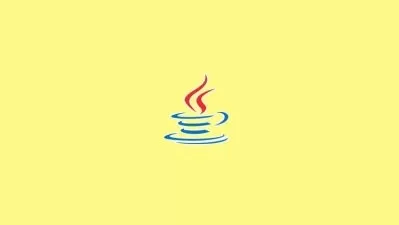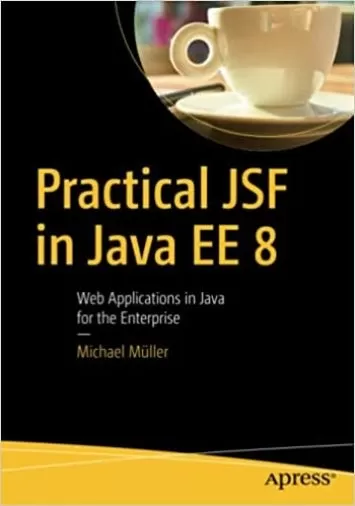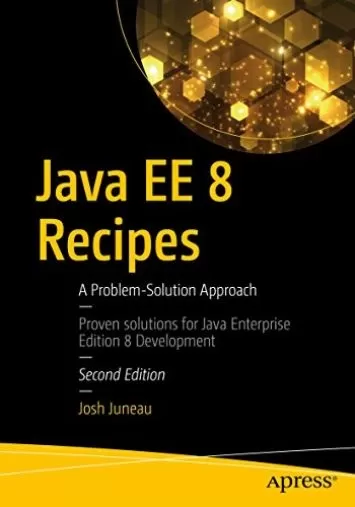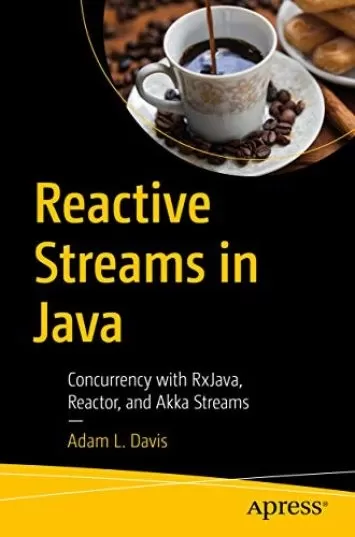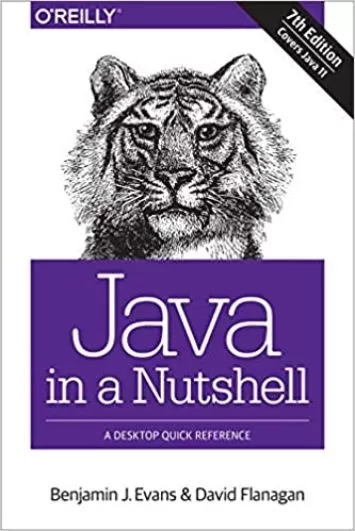About JavaLearn More
Java is one of the most in-demand computer programming languages. It’s used in web applications from e-commerce websites to Android apps. If you want to be a programmer or work with programmers, taking a Java course will help you skill up for the job. Explore our wide range of up-to-date, top-rated Java courses. From primers to certification courses, we’ve got you covered.
Sort by:
Sorting
The newest
Most visited
Course time
Subtitle
Filtering
Courses
![[New] Java Full Stack: React and Spring Boot 3 [Expense App]](https://traininghub.ir/image/course_pic/40540-x225.webp)
Udemy


Bushan Sirgur
[New] Java Full Stack: React and Spring Boot 3 [Expense App] 14:50:16
09/11/2024
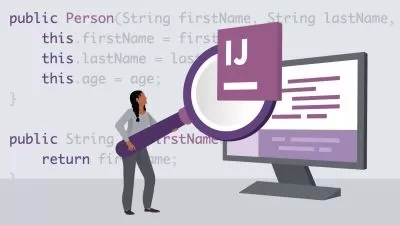
Linkedin Learning


David Gassner
IntelliJ IDEA Community Edition Essential Training 2:10:50
09/11/2024
Subtitle
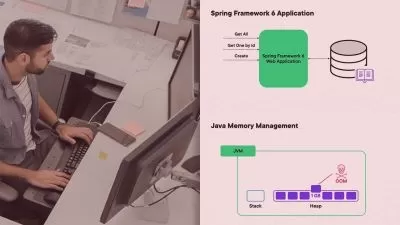
Pluralsight


Bogdan Sucaciu
Deploying Spring Framework 6 Applications Playbook 2:18:46
English subtitles
08/31/2024

Udemy


Programming Academy
Master Java and PHP: Ultimate Full-Stack Development Course 4:09:19
07/22/2024
Subtitle

Udemy


Daniel Ciocîrlan
Scala & Functional Programming Essentials | Rock the JVM 11:21:02
English subtitles
06/22/2024
Books
Frequently asked questions about Java
Java is a programming language and platform initially developed by Sun Microsystems and now owned by Oracle. Java is inspired by C and C++ and uses an object-oriented programming model, which means that concepts or things are represented as “objects” that have data fields and methods. One of the biggest advantages of Java is that it runs on a Java Virtual Machine (JVM), meaning that you can execute Java code on any platform that has a JVM, without re-compilation. This is different from C and C++, which require re-compilation for every hardware platform you execute the code on. Java has many other advantages, including automatic memory management. This eliminates hard to understand pointers used in languages like C, which can help Java developers write better code in a shorter period of time.
Java is an object-oriented programming (OOP) language, which means concepts or things are represented as “objects” that have data fields and methods. In object-oriented programming, models called “objects” represent either a programming entity or an abstract concept. These objects are created and assembled independently of one another but can work with each other in logical ways. Objects are manifestations of classes and can inherit code allowing for code re-use, which can drastically reduce code duplication if used correctly. Additionally, encapsulation, another core OOP concept, allows you to create code with the implementation hidden. Although, in many cases, writing OOP code in Java (and other OOP languages) can take longer than using a procedural language, the benefits obtained with OOP, namely code reusability, encapsulation of data, and readability of code, often result in code that is easier to maintain in the long run.
Java is a very versatile language. Several fields use Java, including Android app development, desktop applications that work on many operating systems, server-side applications, and more. The virtual machine required to run Java programs has been ported to numerous operating systems allowing Java to run on virtually all hardware. According to the TIOBE index, Java has consistently been in the top 3 most-used and popular languages since its initial release in the 1990s. Many developers still consider Java the language of choice in areas such as enterprise and application servers, and even in embedded systems development. Many Fortune 500 companies rely on Java to run their core systems and employers often view Java experience on a résumé as favorable due to its popularity.
Oracle, the owner of the Java programming language, has the Oracle Certified Developer: Java SE 11 Developer program, which is easily the best certification to obtain for Java developers. The main reason why it’s the best certification, is, unlike most other certifications for Java, the Oracle certification is both well known and universally accepted by employers all over the world. The exam is challenging. You also must bring an ID with you to the exam, so you cannot get anyone to take it for you. Certification is really valuable for both the certification holder and for future employers. There are few, if any, other certification programs so universally accepted as Oracle’s Java certification. Thus, getting Java certification is one of the surest ways to give yourself an advantage over other job seekers in the marketplace.
Java is a very popular language and has been for over 20 years. Because of its popularity, it’s built up a huge range of frameworks, toolkits, tutorials, and support. Not to mention, Java developers have a huge number of career opportunities. Another pro of Java is platform independence. A wide variety of computer hardware and operating systems can use Java. Java is also relatively easy to learn and relatively secure. Java runs on its own virtual machine, via byte-code. When compared to traditional languages like C++ that compile to native machine code, Java’s performance can be slower for applications that are time-critical. Java code is verbose and requires much more code to achieve the same functionality compared to languages such as Python. Overall, developers will likely continue to use Java for many years to come because of its popularity and huge adoption.
It’s always difficult to advise someone which language to learn first. Any decision should be based on your longer-term goals. Do you want to learn a language, fast? If so, Python is probably quicker to learn; it has less formality and is often just more fun to learn. Are you coming from another programming language like C# or C++? If so, Java is similar, so you would probably learn Java faster compared to a language like Python, which does things very differently. For example, Python has indentation instead of curly braces. The choice of Java vs Python might come down to the languages’ ability to meet certain goals. For example, if you want to create an Android application, Java is best. Python is not used to write Android applications. Both languages are very popular, offer great career opportunities, and you can learn either in a relatively short period of time.
When comparing the top three Java IDEs — Eclipse, NetBeans, and IntelliJ IDEA — NetBeans tends to be the strongest all-around candidate. First released in 1997, it has a significant body of documentation and a thriving community. You can easily develop mobile, desktop, and web applications with the help of its cross-platform support and visual debugger. Ultimately, though, the best IDE is whichever you're most comfortable using. Many developers prefer to use Eclipse or IntelliJ IDEA because their tools better-align with their workflow. For instance, Eclipse supports application development for a variety of languages through plugins. It also has advanced features for reporting, charting, modeling, and testing. IntelliJ IDEA has both a licensed version and a proprietary commercial version. It has some advanced, powerful features like data flow analysis and cross-language refactoring, but it will also be more expensive than Eclipse or NetBeans.
Java and JavaScript don’t have a lot in common, apart from the word Java. They are different languages, each with strengths and weaknesses. Netscape created JavaScript in 1996. Sun Microsystems created Java in 1991, with the first version released in 1995. Netscape then added Java to the name JavaScript as a marketing ploy to piggyback on the success of the Java language. JavaScript is primarily used in a web browser to make web pages more interactive (web-based applications) whereas Java is used to create standalone applications to run on single computers and servers. Both languages share a similar syntax based on C, but JavaScript is a lightweight language and Java is an object-oriented language with its own virtual machine.





